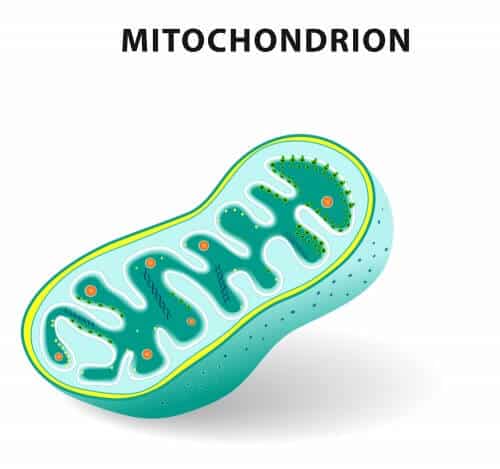New research reveals what exactly happens to paternal mitochondria during fertilization?

The fact that all living things inherit the mitochondria - the cellular "powerhouses" - from the mother is well known. But what exactly happens to the paternal mitochondria during fertilization? The question, why and how the transmission of mitochondria from the fathers to their descendants is prevented, is still a mystery, and this despite the fact that it is a phenomenon that has been well preserved throughout evolution, and among all species.
They recently found out Dr. Eli Arma and the members of his group from the department of molecular genetics special cellular bubbles (vesicles), which are formed in the eggs of the fruit fly, whose function is to destroy the paternal mitochondria during fertilization. Research, which was published in the scientific journal Developmental Cell, may contribute, in the future, to improving the procedure of in vitro fertilization and to understanding fertility problems among men.
The study helps shed light on two competing theories regarding paternal mitochondrial destruction. According to the active theory, the paternal mitochondria are destroyed through a cellular system of "self-eating", known as "selective autophagy". In this process, bubbles called autophagosomes wrap unwanted structures - such as proteins or abnormal cellular organelles, and they are led to be broken down. However, the studies that support this theory were done in worms, whose sperm cell structure is significantly different from the sperm cell of mammals and fruit flies, which is elongated and contains a tail. In the rod, the mitochondria are concentrated and connected to each other to form a kind of long tube, which is connected or wrapped around the skeletal structure of the rod - called axoneme. Can the autophagosome bubbles surround and break down such a large structure, whose length, in a fruit fly, reaches up to 2 mm?
The passive theory is based mainly on two studies in mice, and claims that paternal mitochondria are diluted by an excess amount of maternal mitochondria. However, this theory does not explain the presence of certain autophagy-related genetic markers in paternal mitochondria immediately after fertilization.
The current study, which was led by research students Liron Gal and Yoav Foliti, together with Dr. Yossi Kalifa (then senior intern) and (then) research student Dr. Liat Ravid, all from Dr. Arma's group, and with the assistance of Prof. Zebulon Elazar from the department of biological chemistry at the institute, discovers that the paternal mitochondria are indeed destroyed in an active process. At the moment when the sperm penetrates the egg, the cellular vesicles - already present in the egg of the fruit fly - are attracted to the sperm. They then break down the outer membrane of the sperm cells and allow the mitochondria to separate from the cytoskeleton. Then the long mitochondrial tube is cut into small pieces, and these are "gobbled up" and destroyed in a process of selective autophagy.
A closer look revealed that these cellular vesicles did not resemble those of autophagy, but rather a type of vesicle involved in a different cellular pathway, yet they contained genetic markers of the autophagy mechanism. "What we saw was not a classic autophagy pathway," says Dr. Arma, "since the bubbles involved in it were considerably larger, and did not morphologically resemble autophagosomes." The research findings imply that the unique bubbles of the egg form part of a new system, which consists of a combination of separate biological processes, which are somewhat different from their known classical function.
The scientists believe that these findings will be valid for any creature that produces spermatozoa, including humans, and that they may help, among other things, to understand the fact that only about a quarter of invasive IVFs lead to a normal pregnancy. Is it possible that the invasive medical procedure damages the egg's ability to destroy paternal mitochondria? Dr. Arma and his team members hope that further research on this topic will shed more light on a variety of questions related to paternal mitochondria, with the ultimate goal being a better understanding of mitochondrial factors related to male fertility, as well as understanding the normal turnover of mitochondria in cells - a topic related to neurodegenerative diseases such as Parkinson's.

One response
There are several interesting topics here:
1. Are 100% of the paternal mitochondria always destroyed? Could it be that as a result of variations or mutations, there is a marginal inheritance of paternal mitochondria that we are not aware of?
2. Why did this destruction mechanism develop? Or more interestingly, what happens if it is not working properly? The assumption that if this genome is not destroyed then there is a problem with fertilization is not clear enough in my eyes.
Can anyone here comment on this?
Thanks!